The Three Johns
Mike Ervin
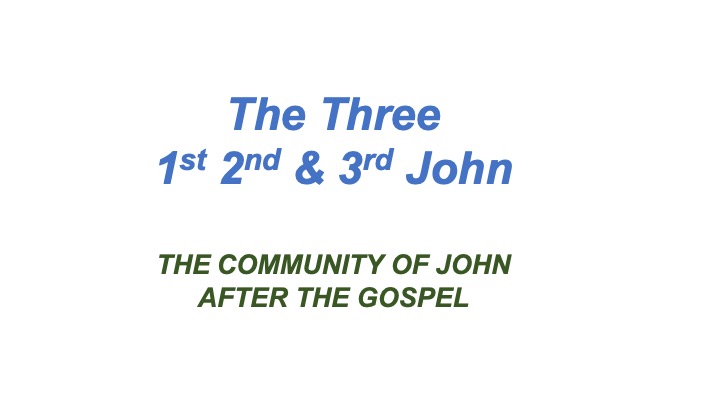

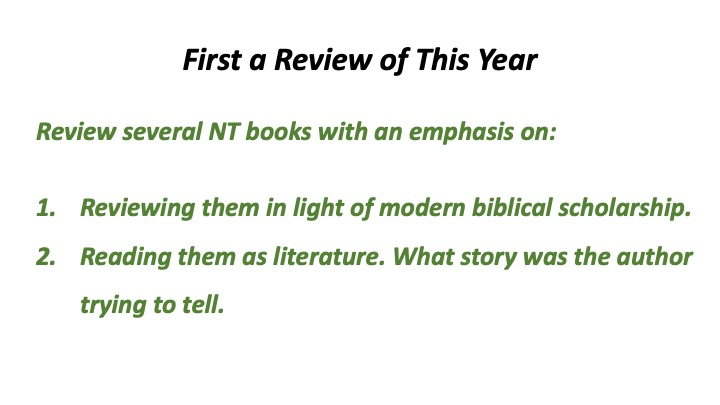
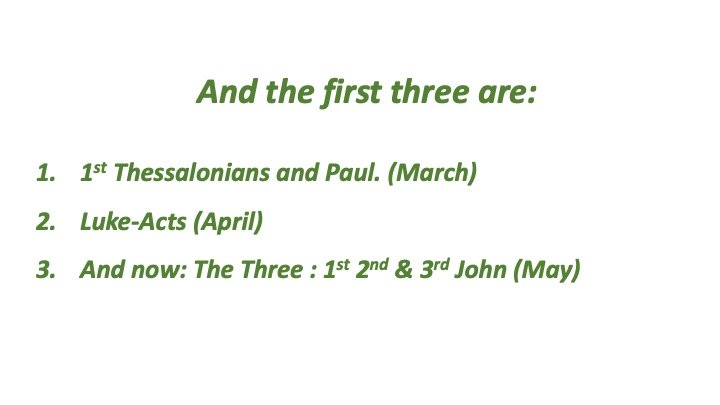
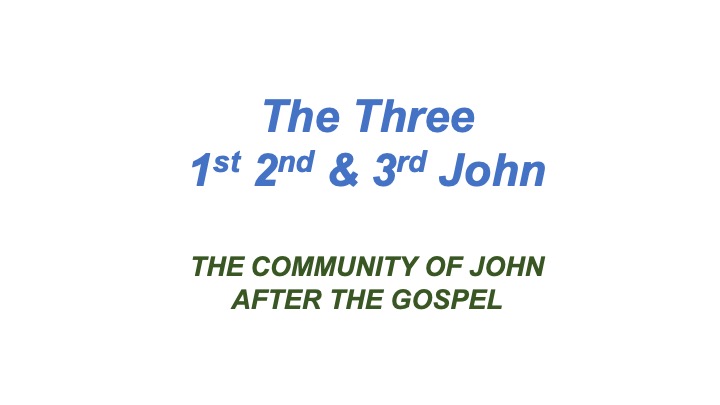
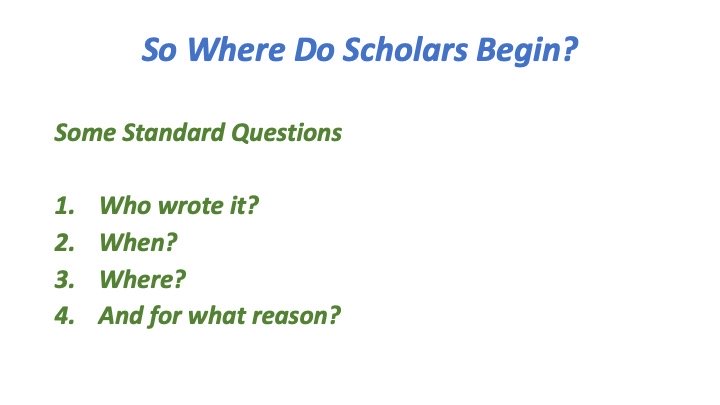
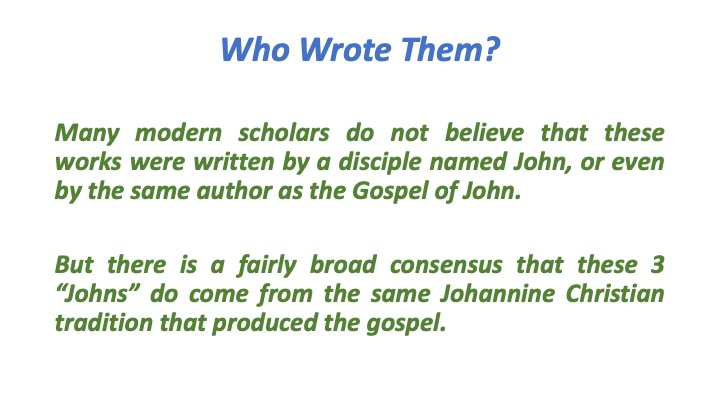
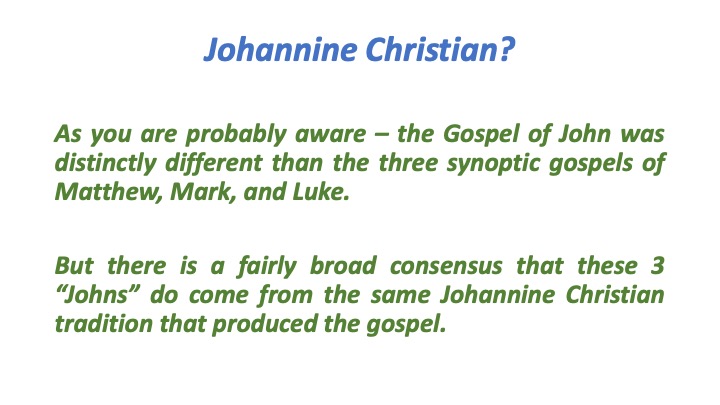
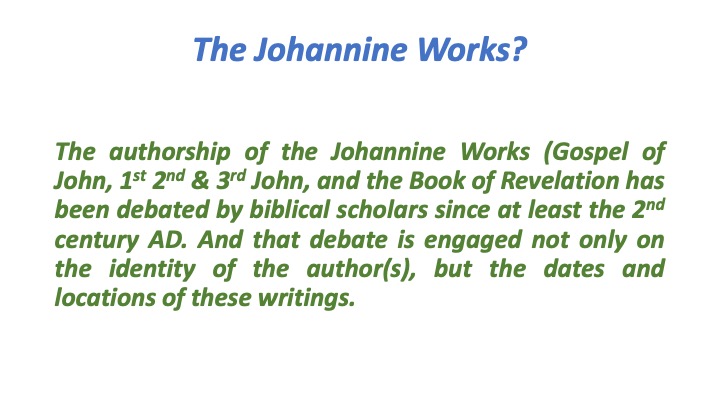
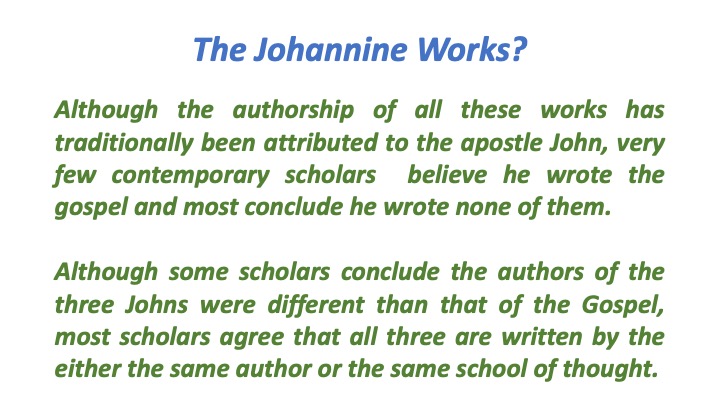
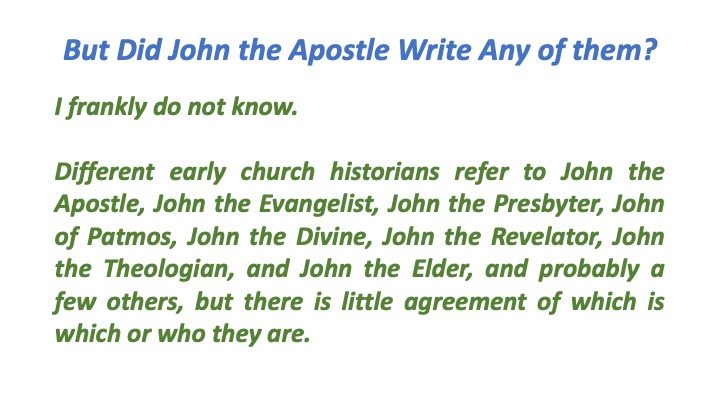
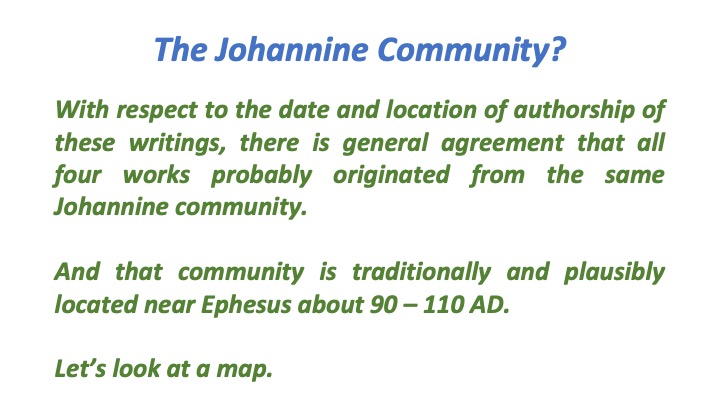
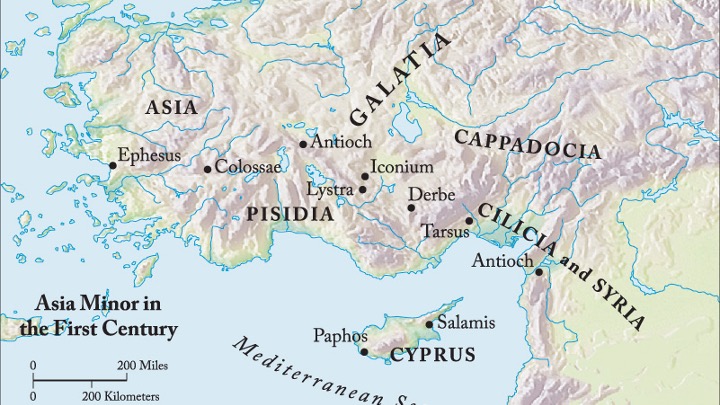
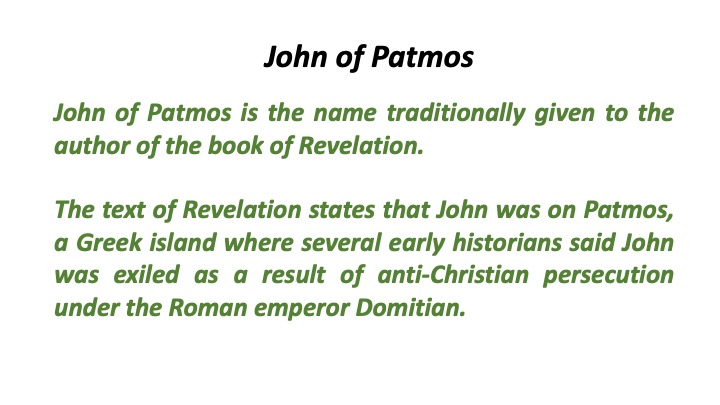
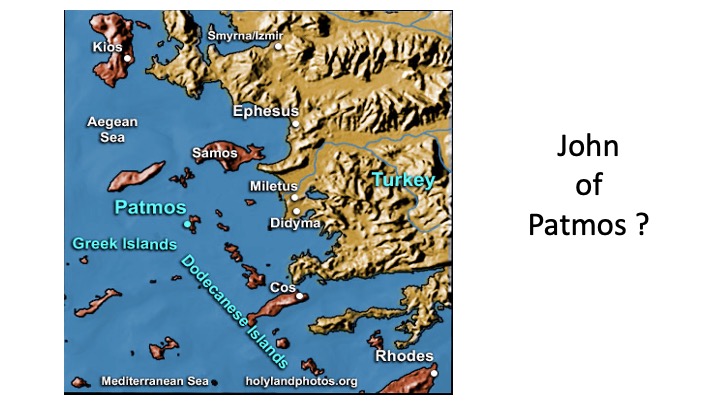
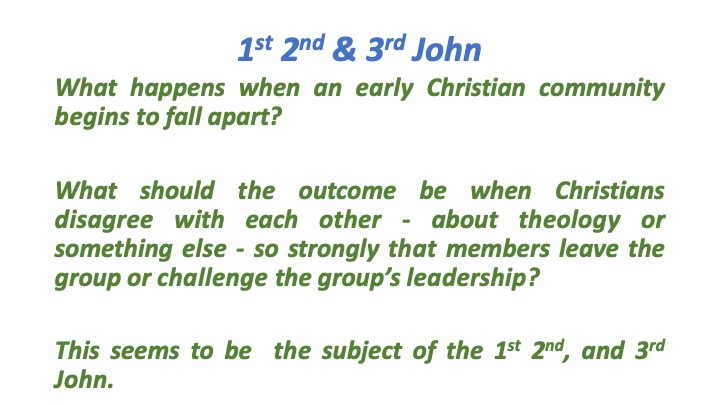
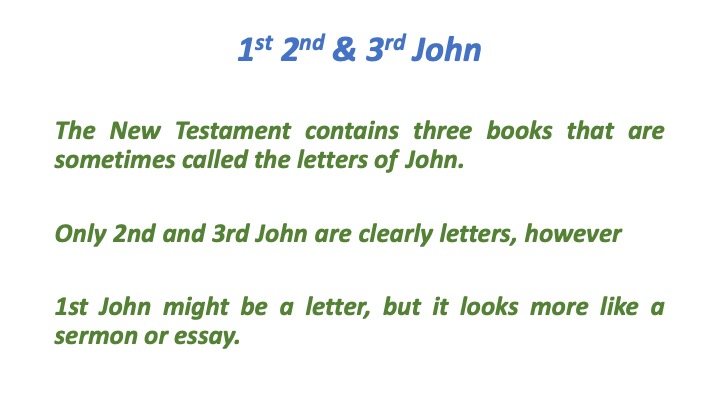
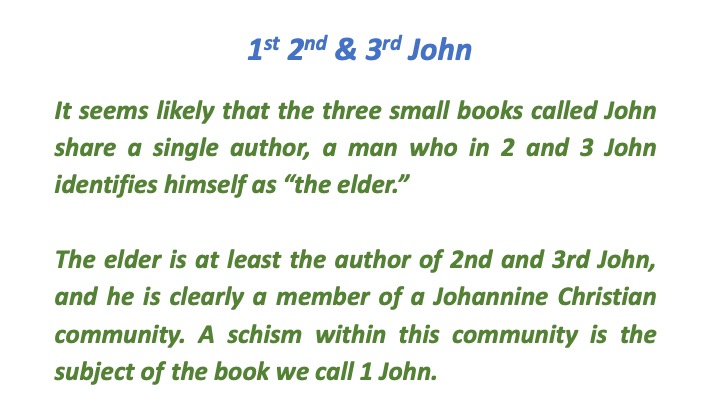
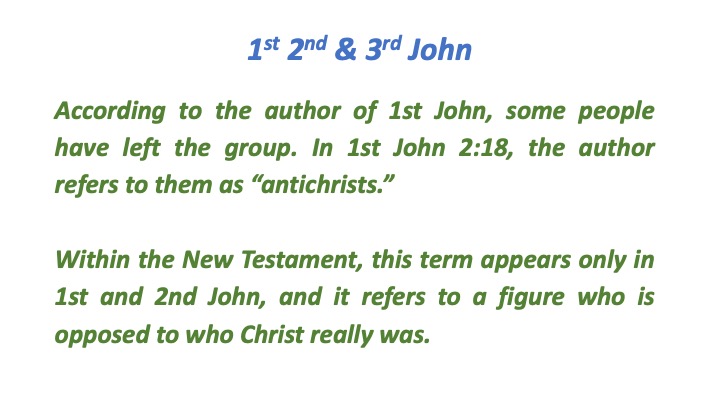
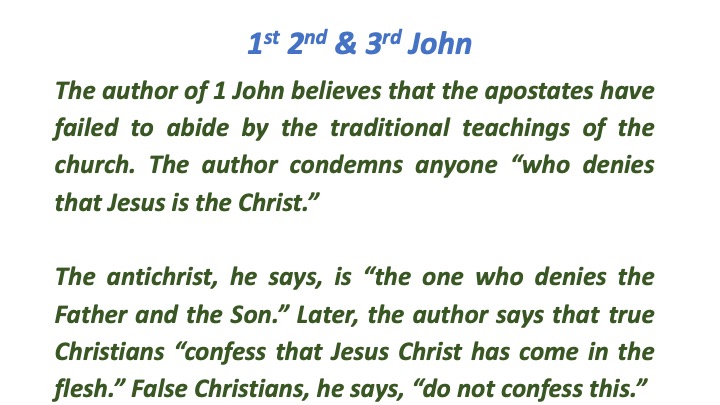
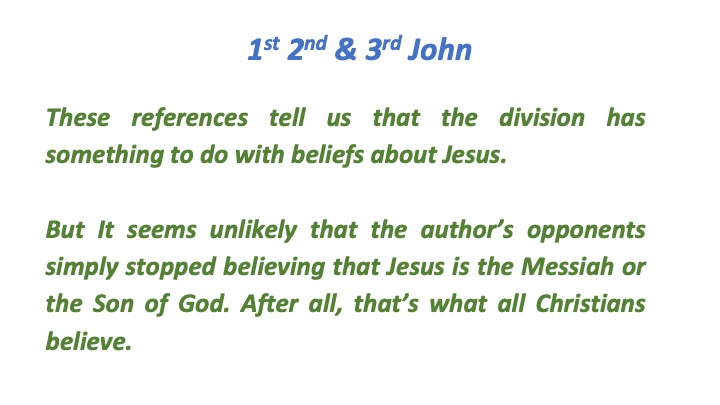
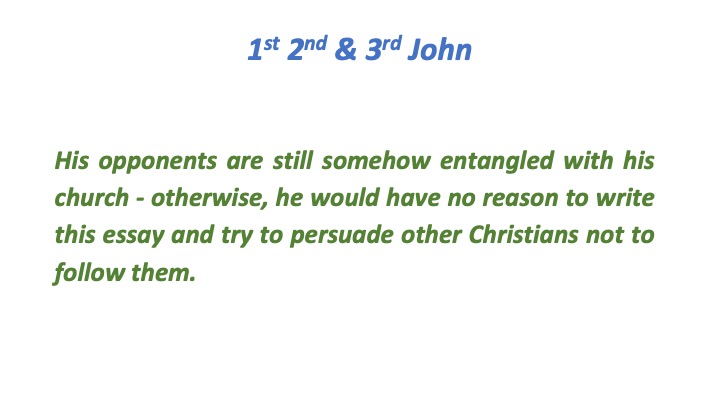
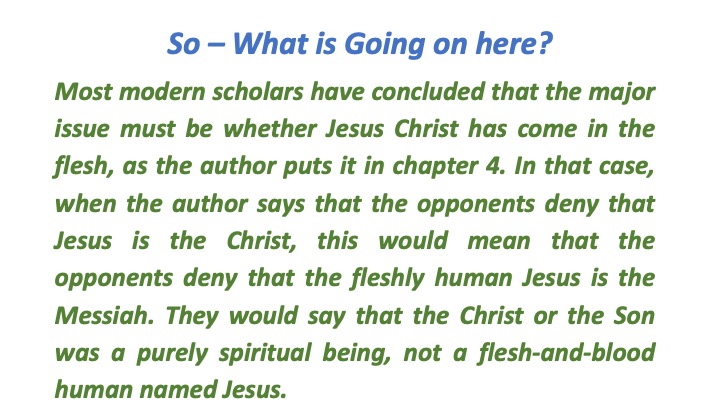
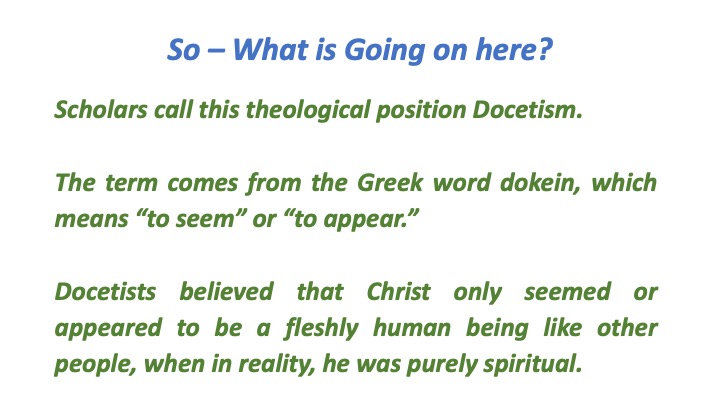
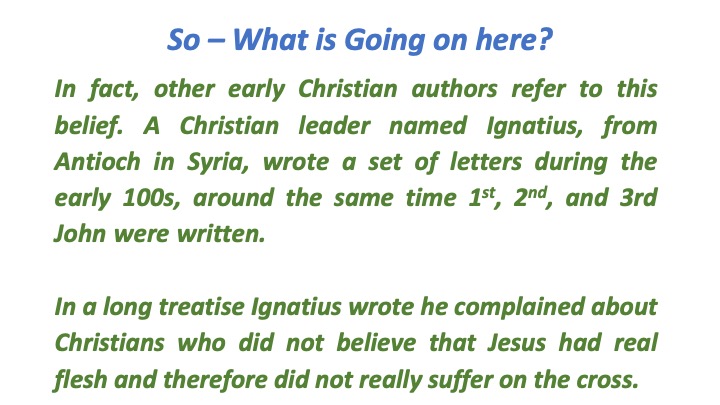
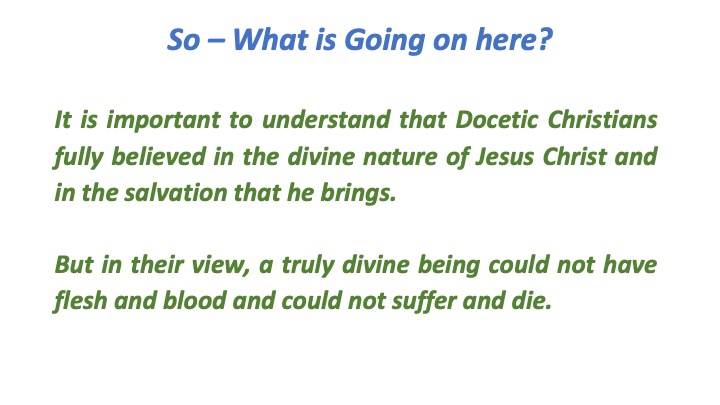
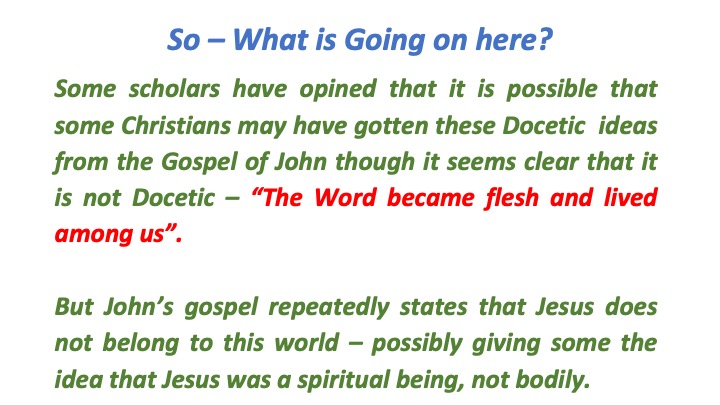
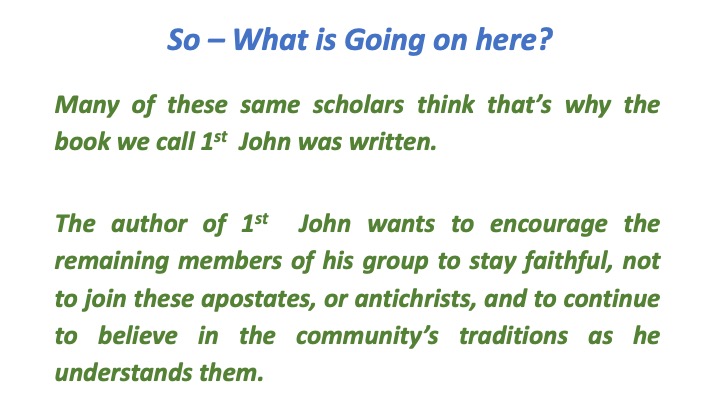
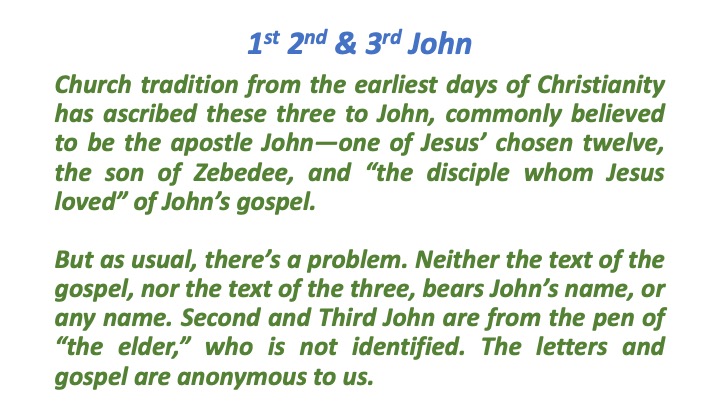
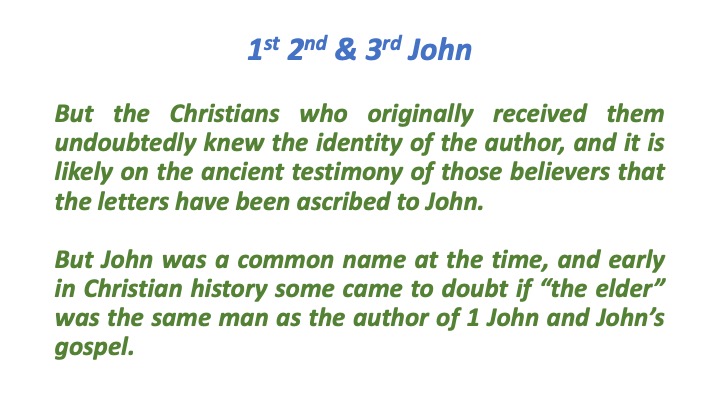
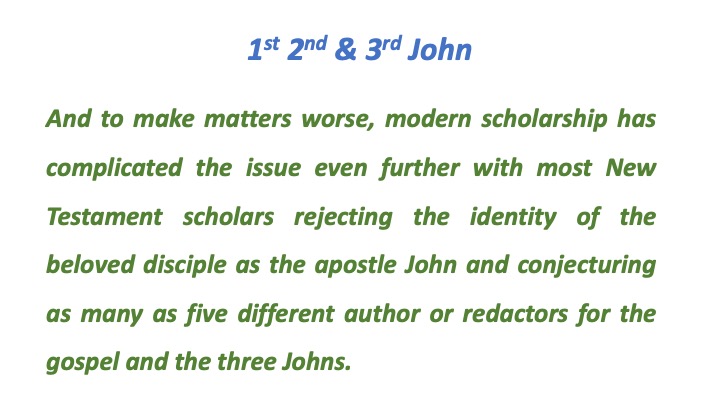
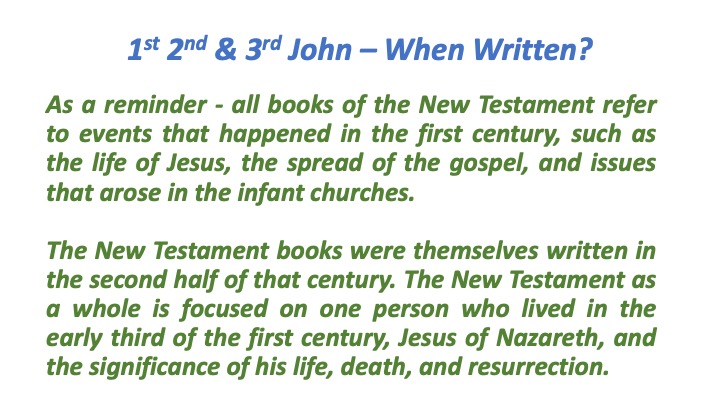
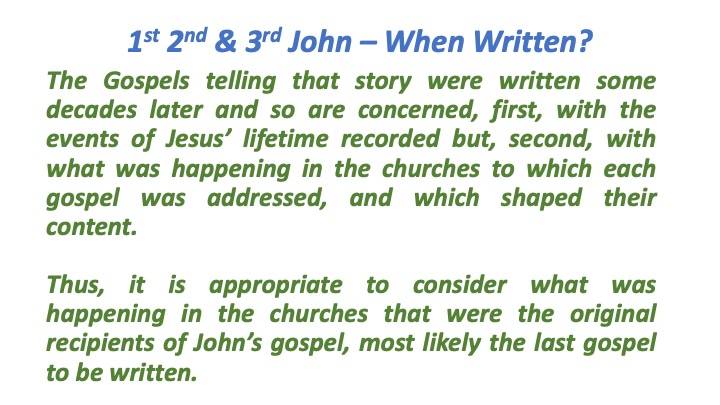
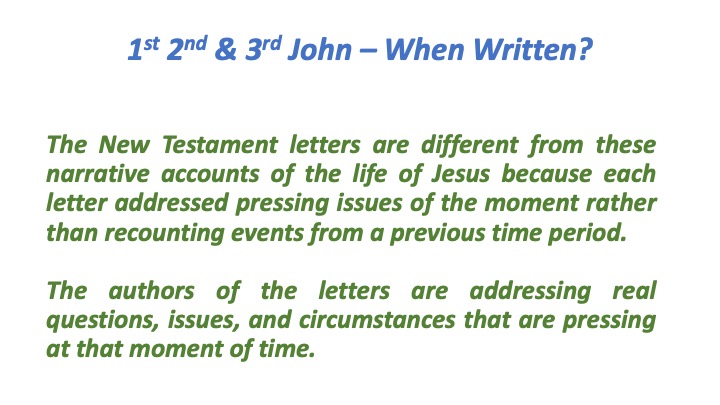
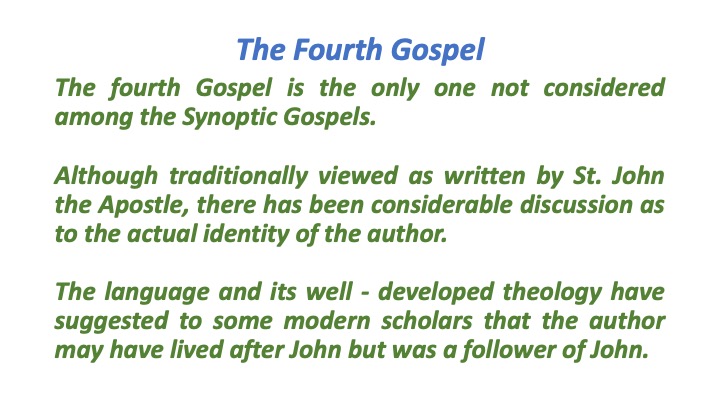
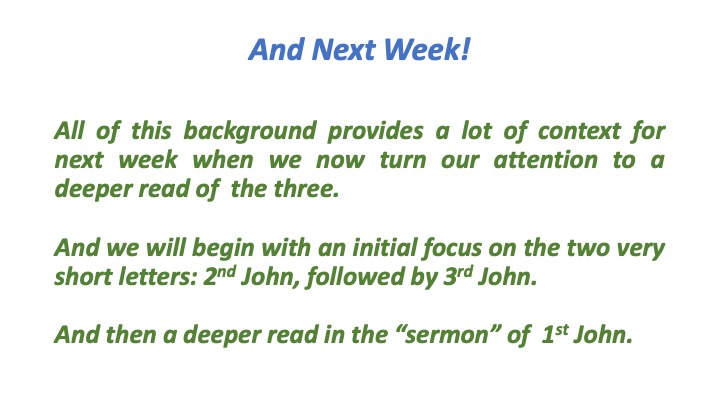
1,2,3 John 1 Text
The Three
1st 2nd & 3rd John
THE COMMUNITY OF JOHN AFTER THE GOSPEL
First - A Review of what I am trying to do this year.
Review several NT books with an emphasis on:
- Reviewing them in light of modern biblical scholarship.
- Reading them as literature. What story was the author trying to tell.
And the first three are:
- 1st Thessalonians and Paul. (March)
- Luke-Acts (April)
- And now: The Three : 1st 2nd & 3rd John (May)
So Where Do scholars Begin?
Some Standard Questions
- Who wrote it?
- When?
- Where?
- And for what reason?
Who Wrote Them?
Many modern scholars do not believe that these works were written by a disciple named John, or even by the same author as the Gospel of John.
But there is a fairly broad consensus that these 3 “Johns” do come from the same Johannine Christian tradition that produced the gospel.
Johannine Christian?
Many modern scholars do not believe that these works were written by a disciple named John, or even by the same author as the Gospel of John.
But there is a fairly broad consensus that these 3 “Johns” do come from the same Johannine Christian tradition that produced the gospel.
The Johannine Works?
The authorship of the Johannine Works (Gospel of John, 1st 2nd & 3rd John, and the Book of Revelation has been debated by biblical scholars since at least the 2nd century AD. And that debate is engaged not only on the identity of the author(s), but the dates and locations of these writings.
The Johannine Works?
Although the authorship of all these works has traditionally been attributed to the apostle John, very few contemporary scholars believe he wrote the gospel and most conclude he wrote none of them.
Although some scholars conclude the authors of the three Johns were different than that of the Gospel, most scholars that all three are written by the either the same author or the same school of thought.
But Did John the Apostle Write Any of them?
I frankly do not know.
Different early church historians refer to John the Apostle, John the Evangelist, John the Presbyter, John of Patmos, John the Divine, John the Revelator, John the Theologian, and John the Elder, and probably a few others, but there is little agreement of which is which or who they are.
The Johannine Works?
With respect to the date and location of authorship of these writings, there is general agreement that all four works probably originated from the same Johannine community.
And that community is traditionally and plausibly located near Ephesus about 90 – 110 AD.
John of Patmos
John of Patmos is the name traditionally given to the author of the book of Revelation.
The text of Revelation states that John was on Patmos, a Greek island where several early historians said John was exiled as a result of anti-Christian persecution under the Roman emperor Domitian.
1st 2nd & 3rd John. The New Testament contains three books that are sometimes called the letters of John.
Only 2 and 3 John are definitely letters, however
1 John might be a letter, but it looks more like a sermon or essay.
It seems likely that the three small books called John share a single author, a man who in 2 and 3 John identifies himself as “the elder.”
The elder is at least the author of 2nd and 3rd John, and he is clearly a member of a Johannine Christian community. A schism within this community is the subject of the book we call 1st John.
According to the author of 1st John, some people have left the group. In 1st John 2:18, the author refers to them as “antichrists.”
Within the New Testament, this term appears only in 1st and 2nd John, and it refers to a figure who is opposed to who Christ really was.
The author of 1 John believes that the apostates have failed to abide by the traditional teachings of the church. The author condemns anyone “who denies that Jesus is the Christ.”
The antichrist, he says, is “the one who denies the Father and the Son.” Later, the author says that true Christians “confess that Jesus Christ has come in the flesh.” False Christians, he says, “do not confess this.”
These references tell us that the division has something to do with beliefs about Jesus.
But It seems unlikely that the author’s opponents simply stopped believing that Jesus is the Messiah or the Son of God. After all, that’s what all Christians believe.
His opponents are still somehow entangled with his church - otherwise, he would have no reason to write this essay and try to persuade other Christians not to follow them.
So – What is Going on here?
Historians call this theological position Docetism. The term comes from the Greek word dokein, which means “to seem” or “to appear.” Docetists believed that Christ only seemed or appeared to be a fleshly human being like other people, when in reality, he was purely spiritual
In fact, other early Christian authors refer to this belief. A Christian leader named Ignatius, from Antioch in Syria, wrote a set of letters during the early 100s, around the same time 1st, 2nd, and 3rd John were written.
In a long treatise Ignatius wrote he complained about Christians who did not believe that Jesus had real flesh and therefore did not really suffer on the cross.
It is important to understand that Docetic Christians fully believed in the divine nature of Jesus Christ and in the salvation that he brings.
But in their view, a truly divine being could not have flesh and blood and could not suffer and die.
Some scholars have opined that it is possible that some Christians may have gotten these Docetic ideas from the Gospel of John though it seems clear that it is not Docetic – “The Word became flesh and lived among us”.
But John’s gospel repeatedly states that Jesus does not belong to this world – possibly giving some the idea that Jesus was a spiritual being, not bodily.
Many of these same scholars think that’s why the book we call 1st John was written.
The author of 1st John wants to encourage the remaining members of his group to stay faithful, not to join these apostates, or antichrists, and to continue to believe in the community’s traditions as he understands them.
Church tradition from the earliest days of Christianity has ascribed these letters to John, commonly believed to be the apostle John—one of Jesus’ chosen twelve, the son of Zebedee, and “the disciple whom Jesus loved” of John’s gospel.
But as usual, there’s a problem. Neither the text of the gospel nor that of the three bears John’s name, or any name. Second and Third John are from the pen of “the elder,” who is not identified. The letters and gospel are anonymous to us.
But the Christians who originally received them undoubtedly knew the identity of the author, and it is likely on the ancient testimony of those believers that the letters have been ascribed to John.
But John was a common name at the time, and early in Christian history some came to doubt if “the elder” was the same man as the author of 1 John and John’s gospel.
And to make matters worse, modern scholarship has complicated the issue even further with most New Testament scholars rejecting the identity of the beloved disciple as the apostle John and conjecturing as many as five different author or redactors for the gospel and the three Johns.
1st 2nd & 3rd John – When Written?
As a reminder - all books of the New Testament refer to events that happened in the first century, such as the life of Jesus, the spread of the gospel, and issues that arose in the infant churches.
The New Testament books were themselves written in the second half of that century. The New Testament as a whole is focused on one person who lived in the early third of the first century, Jesus of Nazareth, and the significance of his life, death, and resurrection.
The Gospels telling that story were written some decades later and so are concerned, first, with the events of Jesus’ lifetime recorded but, second, with what was happening in the churches to which each gospel was addressed and which shaped their content.
Thus, it is appropriate to consider what was happening in the churches that were the original recipients of John’s gospel, most likely the last gospel to be written.
The New Testament letters are different from these narrative accounts of the life of Jesus because each letter addressed pressing issues of the moment rather than recounting events from a previous time period.
The authors of the letters are addressing real questions, issues, and circumstances that are pressing at that moment of time.
The Fourth Gospel
The fourth Gospel is the only one not considered among the Synoptic Gospels (Matthew, Mark, and Luke).
Although traditionally viewed as written my St. John the Apostle there has been considerable discussion as to the actual identity of the author.
The language and its well - developed theology have suggested to some modern scholars that the author may have lived after John but was a follower of John.
And Next Week!
All of this background provides a lot of context for next week when we now turn our attention to a deeper read of the three.
And we will begin with an initial focus on the two very short letters: 2nd John, followed by 3rd John.
And then a deeper read in the “sermon” of 1st John.